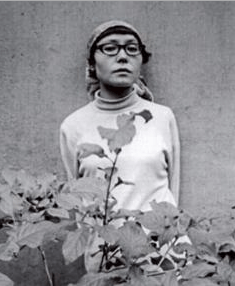Dinara Asanova facts for kids
Quick facts for kids
Dinara Asanova
|
|
|---|---|
| Динара Асанова | |
 |
|
| Born | 24 October 1942 |
| Died | 4 April 1985 (aged 42) Murmansk, Soviet Union
|
| Occupation | Film director, actress |
| Years active | 1969–1984 |
Dinara Asanova (born October 24, 1942) was a talented film director from Kyrgyzstan. She was one of the few well-known female filmmakers in the Soviet Union during her time. Dinara was born in Bishkek, which was then called Frunze.
She is famous for her movies like Woodpeckers Don't Get Headaches (1975) and Boys (1983). Even though she wasn't widely known in Western countries, she was very popular in the Soviet Union. Dinara Asanova made ten films between 1969 and 1984. Her movies often explored the challenges faced by teenagers. She also subtly showed what life was like in Soviet society. Even with these themes, she rarely had problems with the people who controlled what could be shown. Dinara Asanova passed away on April 4, 1985, in Murmansk, at the age of 42, due to a heart problem.
Contents
Dinara Asanova's Career
After finishing high school in 1959, Dinara Asanova started her film journey. From 1960 to 1962, she worked at the Kyrgyzfilm studio. There, she was an assistant director, helped edit films, and even acted a little. She also worked with another famous director, Larisa Shepitko, on her film Heat in 1963.
Later, Asanova went to a special film school in Moscow. It was called the Gerasimov Institute of Cinematography (VGIK). She learned from well-known Soviet directors like Mikhail Romm. For her final school project, she made her first film, Rudolfio (1970).
Dinara graduated in 1969. In 1974, she moved to Leningrad to work at the Lenfilm Studio. Her first major movie there was The Woodpecker Doesn’t Get Headaches (1975). This film helped her become a recognized name in Soviet Cinema. She went on to make eight more films at Lenfilm. Her movie Boys (1983) was her most popular and earned a lot of money. Her career ended when she passed away in 1985.
How Dinara Asanova Made Her Films
Stories in Her Films
Dinara Asanova's movies often showed the everyday struggles of people, especially young people. Her most famous films, like Rudolfio and Boys, looked at the difficulties teenagers face. They explored the tricky path from being a child to becoming an adult. Her films also touched on personal problems and the challenges of living in the Soviet Union.
Asanova was part of a group called the "Leningrad School" of filmmakers. This group included directors like Vitaly Melnikov and Gleb Panfilov. They were known for making movies that felt very real. Their films were often a bit unclear, making viewers think. They also quietly criticized everyday life and Soviet society.
Her Unique Style
Dinara Asanova's film style was very realistic. It was almost like a documentary, showing the world as it truly was. She used this realistic approach to make her stories feel more genuine. Her films often focused on individuals and their real-life experiences.
Asanova was also known for letting actors improvise. This means they would sometimes make up their own lines or actions on the spot. This helped her films feel raw and true to life. She also liked to mix famous actors with new, unknown young actors in her movies.
The "Khrushchev Thaw" and Asanova's Films
The way Dinara Asanova made her films was influenced by a period in the Soviet Union called the "Khrushchev Thaw". This "Thaw" happened in the 1950s and 1960s when Nikita Khrushchev was the leader. Before this, Joseph Stalin had very strict rules about art and films. Artists could not criticize anything.
But during the Thaw, things changed. Writers, artists, and filmmakers were allowed to show problems in Soviet society. They could also focus on individual people's experiences, not just the group as a whole. Even after Khrushchev's time, the effects of the Thaw continued.
Dinara Asanova was a key filmmaker from this period. She often spoke out about her thoughts on Soviet society. She especially focused on issues related to gender and daily life. She showed these ideas through her young characters in her films. Even though censorship was less strict, Asanova was smart about how she showed her critiques. This helped make sure her films were not banned.
Dinara Asanova's Legacy
Dinara Asanova is still seen as an important female filmmaker from the late Soviet Union. Even though she died young at 42, she made many films that helped shape Soviet Cinema.
She received the USSR State Prize for her work on Boys. In 1980, she was also named a Merited Artist of The Russian Federation. Her film Dear, Dearest, Beloved, Unique... was shown at the famous 1985 Cannes Film Festival. After she passed away, three documentaries were made about her life and work. These include I Love You All Very Much (1987), Dinara (1988), and Dinara Asanova (2003).

